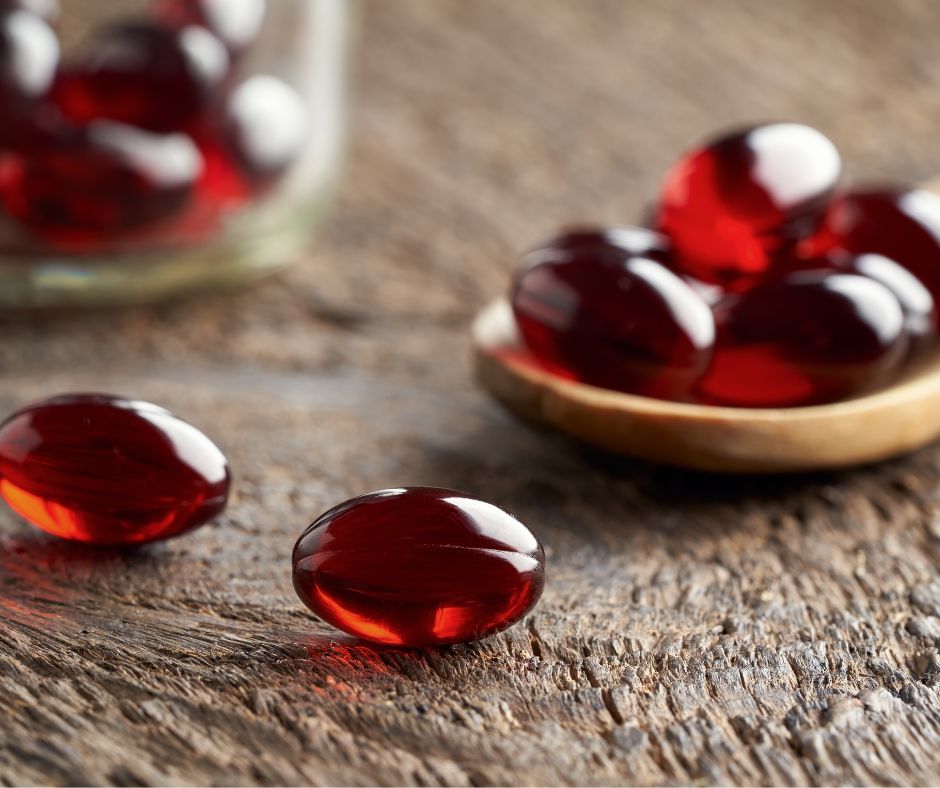Article Reviews
★★★★★
You're very welcome, Carmel!
Just a reminder, I can not recommend that 48 mg dose because I am not a doctor and there are no studies to support that dose in humans that I am aware of. I used that dose at my own risk. The study in the elderly used just 24 mg/day of Astaxanthin to very good effect, so that dose should be enough, but I did not see that study before I started my test, I saw it at the end of my test, otherwise I probably would have gone with the 24 mg dose.
In the first study they determined that the elderly participants were able to increase the distance they walked in 6 minutes which is similar to what I found myself. In thinking about it, it may have slightly improved my stability when walking because some days, prior to Astaxanthin, I felt a slight instability and after Astaxanthin, that was less noticeable, but that may be down to increased muscle strength?
Please keep us updated on your results after 5 weeks of Astaxanthin!
Art
Carmel,
I forgot to mention in my reply, that I do not have fatigue so I can not comment on that aspect of Astaxanthin, but I did find an article that referenced a study suggesting that it is helpful in relieving daily mental and physical fatigue :
I also found this study suggesting benefit for fatigue :
Here is a relevant study quote :
' Hongo et al., reported that astaxanthin reduced daily fatigue stemming from mental and physical causes [17].'
Art
(Manahawkin, NJ)
11/06/2022
Do you think this would relieve the pain and discomfort associated with arthritis and joint pain and possibly plantar fasciitis?
Christine
ChristineTucci,
Although Astaxanthin has recently shown benefit for arthritis due to its antioxidative stress and anti inflammatory activities, I do not believe it is a top tier remedy for arthritis and you are likely to find better remedies for that specific purpose.
I think the most effective remedy reported for arthritis on Earth Clinic is Borax, the laundry additive sold in the laundry detergent aisle in markets across the US.
I am a true believer in Borax because it has kept my arthritis in remission for way over a decade now, as in no arthritic pain. You should read EC's page on Borax, I think you will find it interesting! Here is a link to it :
https://www.earthclinic.com/remedies/borax.html
Further, here is a link to EC's Arthritis page so you can see what remedies work best for arthritis :
https://www.earthclinic.com/cures/arthritis.html
Regarding your Plantar Fasciitis, you should also refer to PF remedies on EC which can be found here :
https://www.earthclinic.com/cures/plantar-fasciitis-treatment-alternative-medicine.html
My personal experience is that a combination of remedies is usually the fastest approach for PF.
Good luck!
Art
(Seattle)
12/15/2022
It's worth noting that astaxanthin thins the blood, so anyone who DOESN'T need or want that to happen should avoid it. I was taking only 4mgs/day when I developed vitreous hemorrhages -- bleeding -- in my eye. Basically 'bloody floaters'. Doc said anything that thins the blood will increase these types of floaters dramatically, so I stopped.
Article Reviews
Energy and Endurance
★★★★★
Magnolia,
Thank you for your feedback on Astaxanthin and I am glad that it gave you increased energy after just one month of use! Very good to know!
Art
I experienced the same effect. I'm 77 yrs old and for me it worked overnight! I was quite amazed. I now take it daily and it really does still help with energy, not as much as it did in the beginning, but still it helps quite a bit. I'm glad you found it and wrote about it, so others in their 70's will know there is something that will help with energy, even at our advanced age.
Janet,
Congratulations on your great results with Astaxanthin and thank you for giving your results with the use of Astaxanthin!
Art



